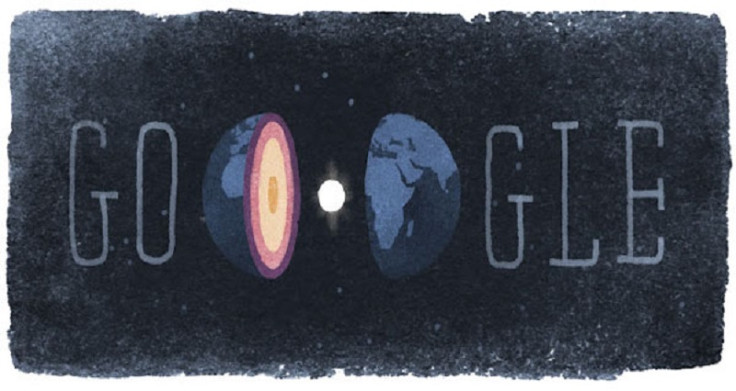Pioneering Danish seismologist Inge Lehmann celebrated with a Google Doodle

Google has celebrated the 127th birthday of Danish seismologist Inge Lehmann with a Doodle .
The pioneering scientist, who died aged 105 in 1993, transformed our perception of Earth by discovering the existence of an inner core. She studied earthquakes to make her findings.
The Doodle shows Earth sliced into two, with its molten core shining like a star.
As the American Museum of Natural History notes, in 1929 a large earthquake occurred near New Zealand. Lehmann "the only Danish seismologist," as she once referred to herself - studied the shock waves and was puzzled by what she saw.
A few P-waves, which should have been deflected by the core, were in fact recorded at seismic stations. Lehmann theorised that these waves had travelled some distance into the core and then bounced off some kind of boundary. Her interpretation of this data was the foundation of a 1936 paper in which she theorized that Earth's centre consisted of two parts: a solid inner core surrounded by a liquid outer core, separated by what has come to be called the Lehmann Discontinuity.
Lehmann's hypothesis was confirmed in 1970 when more sensitive seismographs detected waves deflecting off this solid core.

She was a pioneer among women and scientists. Her early education was at a progressive school where boys and girls were treated exactly alike. This was a sharp contrast to the mathematical and scientific community she later encountered, about which she once protested to her nephew, Niles Groes, "You should know how many incompetent men I had to compete with—in vain." Groes recalled: "I remember Inge one Sunday in her beloved garden...with a big table filled with cardboard oatmeal boxes. In the boxes were cardboard cards with information on earthquakes...all over the world. This was before computer processing was available, but the system was the same.
"With her cardboard cards and her oatmeal boxes, Inge registered the velocity of propagation of the earthquakes to all parts of the globe. By means of this information, she deduced new theories of the inner parts of the Earth."
A critical and independent thinker, Lehmann subsequently established herself as an authority on the structure of the upper mantle. She conducted extensive research in other countries, benefiting from an increased global interest in seismology for the surveillance of clandestine nuclear explosions. When Lehmann received the William Bowie medal in 1971, the highest honour of the American Geophysical Union, she was described as "the master of a black art for which no amount of computerising is likely to be a complete substitute."
© Copyright IBTimes 2025. All rights reserved.





















